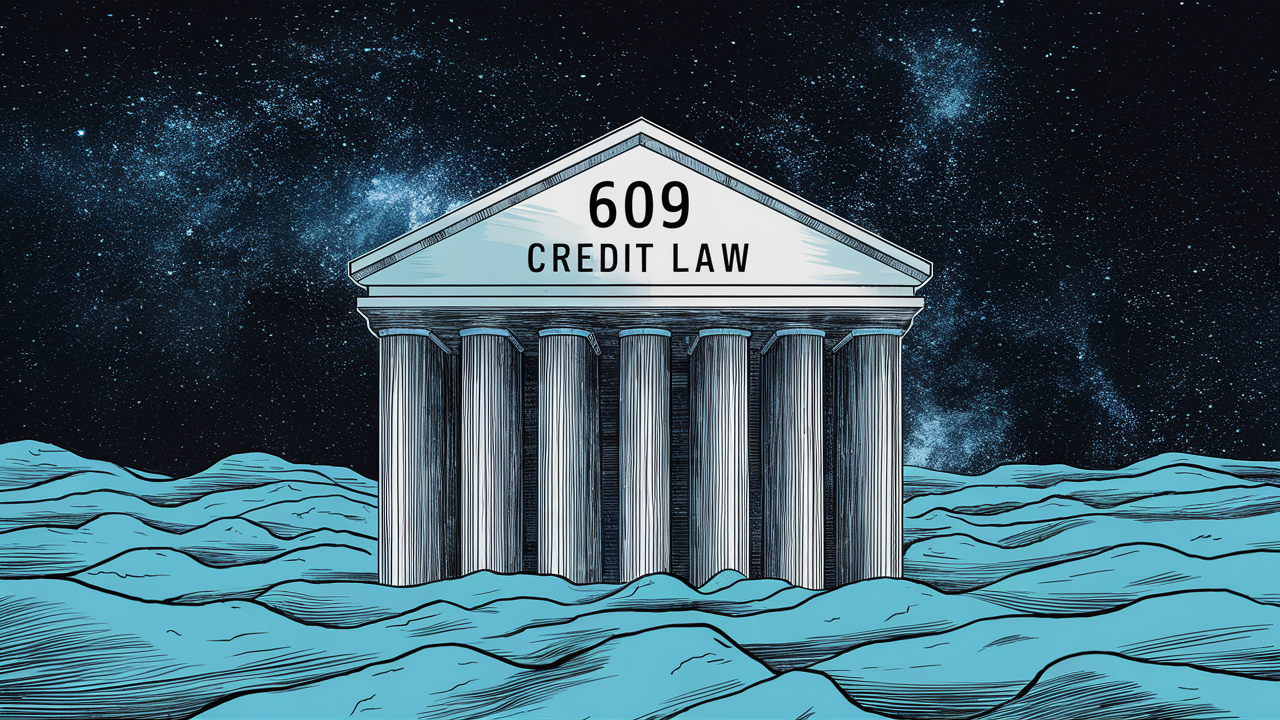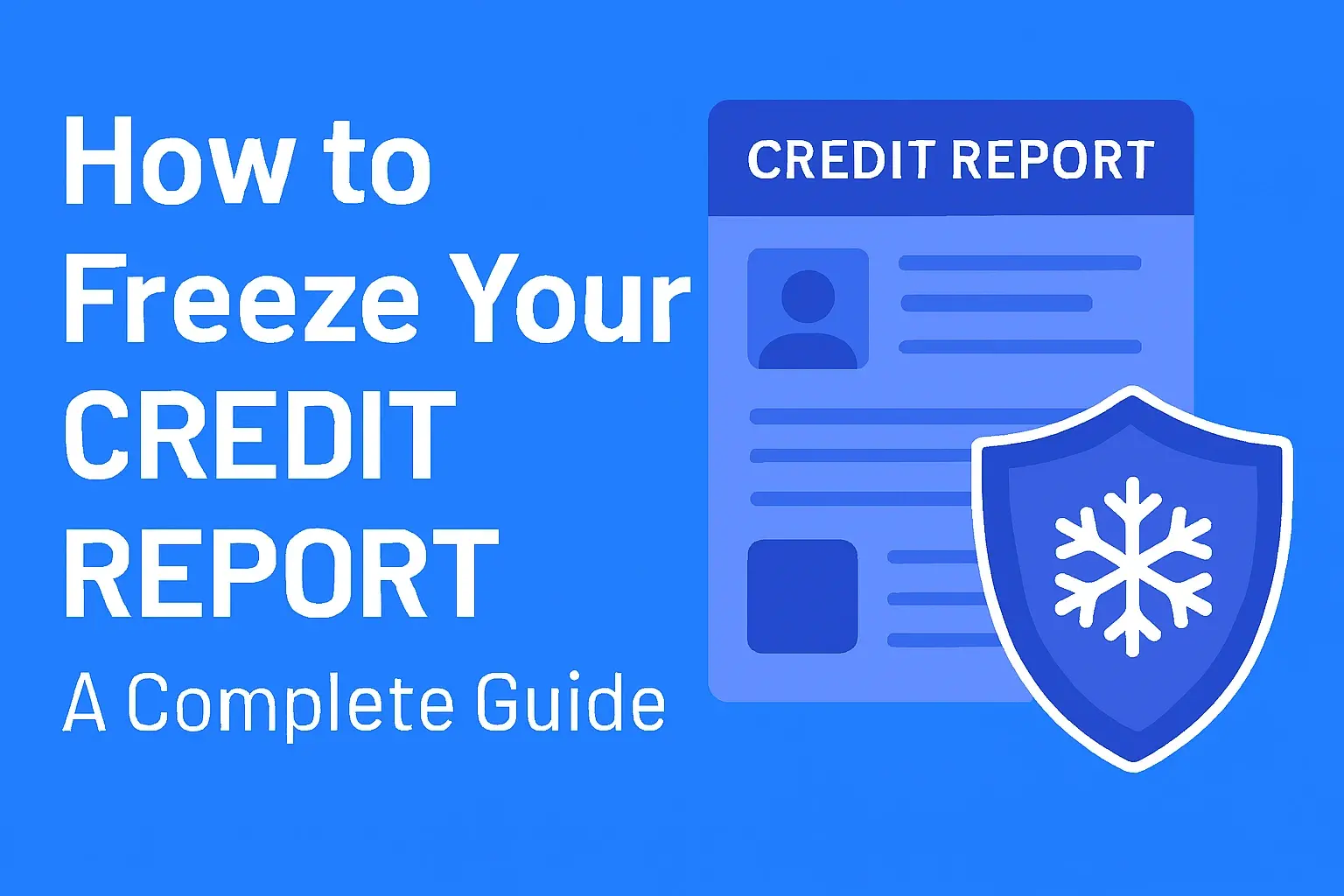-
Posted on: 24 Jul 2024

-
Navigating the world of credit can be complex, especially when dealing with inaccuracies or errors on your credit report. One concept often discussed in the realm of credit repair is "609 credit law." But what exactly is it, and how can it help you? This comprehensive guide will break down the 609 credit law, explain your rights under the Fair Credit Reporting Act (FCRA), and provide practical steps on how to leverage this information to potentially improve your credit score.
Understanding the Fair Credit Reporting Act (FCRA)
To understand 609 credit law, it's crucial to first grasp the foundation it's built upon: the Fair Credit Reporting Act (FCRA). The FCRA is a federal law enacted in 1970 that regulates the collection, dissemination, and use of consumer credit information. Its primary goal is to ensure fairness, accuracy, and privacy in the credit reporting process.
Key Provisions of the FCRA:
- Right to Accuracy: You have the right to have accurate and verifiable information reported about you.
- Right to Dispute: You have the right to dispute inaccurate or incomplete information on your credit report with the credit bureaus (Experian, Equifax, and TransUnion).
- Right to Disclosure: You have the right to receive a free copy of your credit report from each of the three major credit bureaus annually through AnnualCreditReport.com.
- Right to Privacy: Your credit information can only be accessed for permissible purposes, such as credit decisions, employment screening (with your consent), or insurance underwriting.
- Right to Reinvestigation: The credit bureaus must investigate your disputes within a reasonable timeframe (typically 30 days).
- Right to Deletion: If the information cannot be verified or is found to be inaccurate, the credit bureau must delete it from your credit report.
What is the 609 Credit Law (and What It Really Means)?
The term "609 credit law" is often used, but it's important to understand that it's not a standalone law. Instead, it refers to Section 609 of the Fair Credit Reporting Act (FCRA). This section specifically outlines your right to request information regarding the source of the information on your credit report.
Section 609(a)(1)(A) of the FCRA states: "Subject to subsection (f), and except as provided in subsection (i), every consumer reporting agency shall, upon request, and subject to paragraph (2), clearly and accurately disclose to the consumer all information in the consumer’s file at the time of the request."
In simple terms, this means you have the right to request the "method of verification" of any information on your credit report. You can ask the credit bureaus to provide documentation that proves the accuracy and validity of the information being reported. This is often interpreted as requesting the original signed contract or agreement that led to the debt in question.
Why is this important? If the credit bureau cannot provide adequate documentation to verify the accuracy of the information, they are legally obligated to remove it from your credit report. This can potentially improve your credit score.
The Reality vs. The Hype
It's crucial to be realistic about the 609 credit law. It's not a magic bullet for instant credit repair. Many websites and companies promote "609 letters" as a quick fix to remove negative items, but this is often an oversimplification and can be misleading.
The 609 process is a legitimate tool for disputing inaccurate or unverifiable information. However, it's not designed to remove legitimate debts that you actually owe. Credit bureaus are required to investigate disputes, but if the information is accurate and verifiable, it will likely remain on your report.
How to Use the 609 Credit Law: A Step-by-Step Guide
Here's a detailed guide on how to effectively utilize the principles behind Section 609 of the FCRA to potentially improve your credit report:
Step 1: Obtain Your Credit Reports
The first step is to get a copy of your credit reports from all three major credit bureaus: Experian, Equifax, and TransUnion. You can obtain a free copy of each report annually through AnnualCreditReport.com. Carefully review each report for any errors, inaccuracies, or outdated information.
Step 2: Identify Inaccurate or Unverifiable Items
Carefully examine your credit reports and identify any items you believe are inaccurate, incomplete, or unverifiable. This might include:
- Incorrect account balances
- Late payments that were not actually late
- Accounts that don't belong to you (identity theft)
- Duplicate accounts
- Closed accounts that are still reported as open
- Outdated information (accounts older than 7-10 years, depending on the type of debt)
Step 3: Draft Your Dispute Letters (The "609 Letter")
Now, you'll need to draft dispute letters to each credit bureau. While often referred to as "609 letters," it's more accurate to consider them as dispute letters leveraging the principles of Section 609. Here's a template you can adapt:
[Your Name] [Your Address] [Your Phone Number] [Your Email Address] [Date] [Credit Bureau Name] [Credit Bureau Address] Subject: Dispute of Information - [Your Full Name] - [Your Social Security Number] - [Your Date of Birth] Dear [Credit Bureau Name], I am writing to dispute the following information on my credit report. My credit report number is [Your Credit Report Number]. The following item(s) are inaccurate and/or unverifiable: 1. [Account Name]: [Account Number] - I believe this information is inaccurate because [Explain the reason for your dispute. Be specific. For example, "This account does not belong to me," "The balance is incorrect," or "I paid this account in full on [Date] and it is still being reported as unpaid."]. I request documentation verifying this information, as permitted under Section 609 of the Fair Credit Reporting Act (FCRA). 2. [Account Name]: [Account Number] - [Repeat the explanation as above] [Continue listing all disputed items] I request that you investigate these items and provide me with documentation verifying their accuracy. If the information cannot be verified, I request that you remove it from my credit report immediately. Thank you for your prompt attention to this matter. Sincerely, [Your Signature] [Your Typed Name]Key Tips for Writing Effective Dispute Letters:
- Be Clear and Concise: Clearly state what information you are disputing and why.
- Be Specific: Provide specific details, such as account numbers, dates, and amounts.
- Keep a Copy: Make a copy of each letter for your records.
- Certified Mail: Send your letters via certified mail with return receipt requested. This provides proof that the credit bureau received your dispute.
Step 4: Send Your Dispute Letters to Each Credit Bureau
Mail your dispute letters to the following addresses:
- Experian: P.O. Box 4500, Allen, TX 75013
- Equifax: P.O. Box 740256, Atlanta, GA 30374
- TransUnion: P.O. Box 2000, Chester, PA 19016
Step 5: Wait for the Credit Bureau's Response
The credit bureaus have 30 days (or 45 days in some cases) to investigate your dispute. During this time, they will contact the creditor or data furnisher to verify the information. They will then notify you of the results of their investigation. This notification must include:
- The results of the investigation.
- A description of the procedures used to determine the accuracy of the information.
- A reinvestigation of the disputed information.
- A notice of your right to add a statement to your credit report explaining your side of the story if the dispute is not resolved to your satisfaction.
Step 6: Review the Results and Take Further Action
Once you receive the credit bureau's response, carefully review the results. If the credit bureau verified the information as accurate, you have a few options:
- Add a Statement to Your Credit Report: You can add a 100-word statement to your credit report explaining your side of the story. This statement will be included whenever your credit report is accessed.
- Dispute Directly with the Creditor: You can dispute the information directly with the creditor or data furnisher.
- Seek Legal Counsel: If you believe the credit bureau or creditor is violating the FCRA, you may want to consult with an attorney specializing in consumer credit law.
If the credit bureau removed the disputed information, congratulations! This should positively impact your credit score. Continue to monitor your credit reports regularly to ensure accuracy and prevent future errors.
When Does the 609 Credit Law NOT Work?
It's important to be aware that the 609 process is not a guaranteed solution for credit repair. It is less likely to be effective in the following situations:
- Accurate Information: If the information on your credit report is accurate and verifiable, the credit bureau is unlikely to remove it.
- Valid Debts: You cannot use the 609 process to avoid paying valid debts that you owe.
- Statute of Limitations: While some debts may be past the statute of limitations for legal collection, they may still be reported on your credit report for the allowed time (typically 7 years for most negative items).
Alternatives to the 609 Credit Law Approach
While using Section 609 to dispute errors is valuable, consider these alternative and complementary strategies for improving your credit profile:
- Debt Validation: Before paying on a debt, especially if you believe it's invalid or inaccurate, send a debt validation letter to the debt collector. This requires them to provide proof that the debt is yours, the amount is correct, and they have the legal right to collect it.
- Good Credit Habits: The best way to improve your credit score is to establish and maintain good credit habits, such as paying your bills on time, keeping your credit card balances low, and avoiding opening too many new accounts at once.
- Secured Credit Card: If you have a limited or poor credit history, a secured credit card can be a great way to build or rebuild your credit.
- Credit Builder Loan: A credit builder loan is a small loan specifically designed to help you build credit. You make regular payments, and the lender reports your payment history to the credit bureaus.











